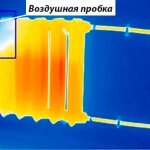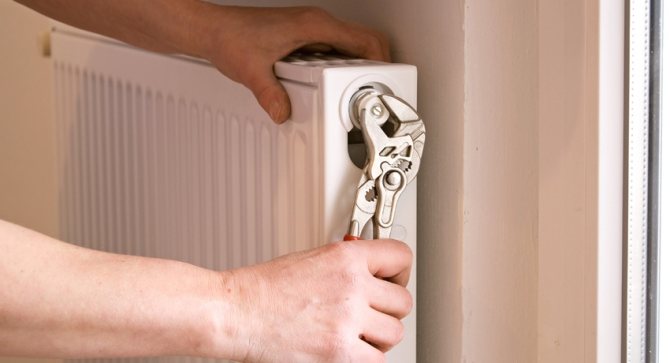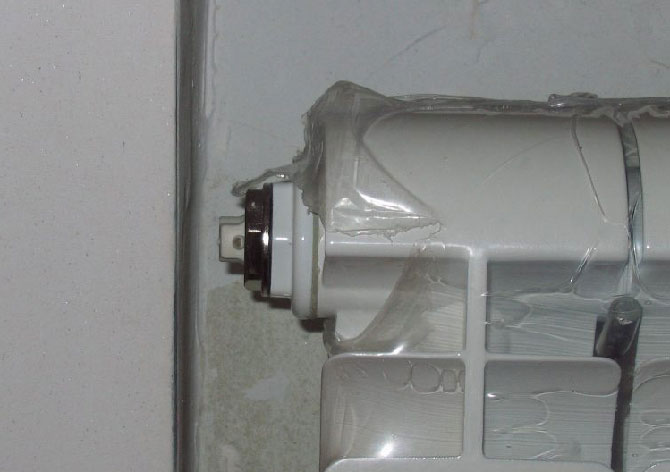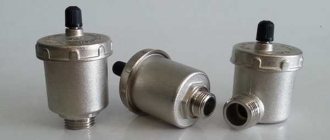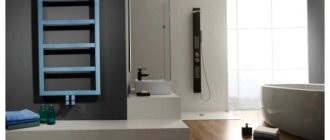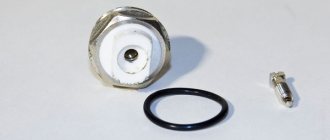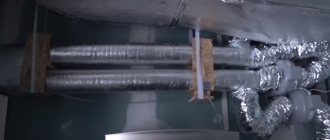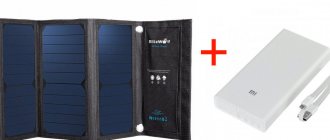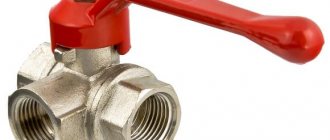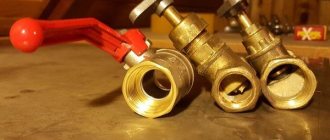Description of the Mayevsky crane
In whatever direction we consider the Mayevsky valve, it has compliance with its technological purpose and regulations within the industry standard, and is a valve for venting STD 7073V air from industrial or domestic heating systems.
The name of the Mayevsky crane is used only among the people. According to state standards, it is classified as a shut-off valve and is called a needle radiator air valve.
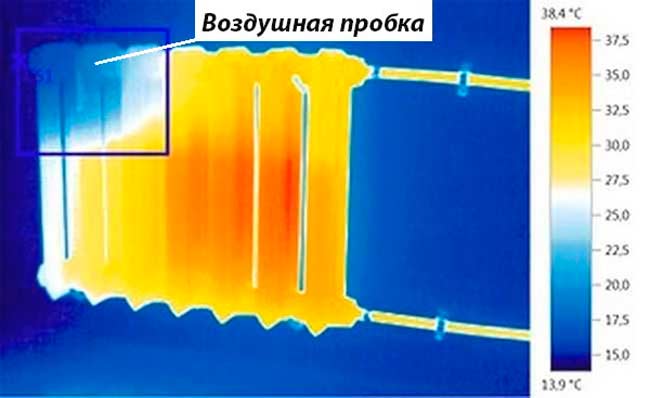
One of the most common problems that leads to malfunction of heating systems is the accumulation of air. The resulting plug prevents the fluid from circulating normally. As a result, the radiator with air inside reduces the performance of the entire system.
The coolant that circulates in the heating radiator plays the role of providing heat in the cold season. But it happens that the batteries do not warm up to the end. This can be due to the accumulation of air in the radiator, and it prevents hot water from filling the entire space of the radiator. Therefore, this air must be somehow removed from there. It is for this that the Mayevsky crane works.
Mayevsky crane device
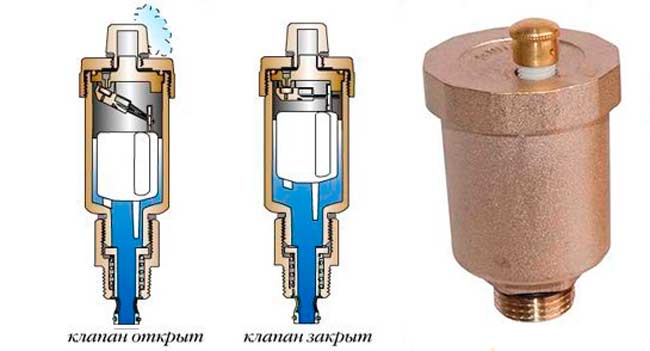

How to bleed the air from the tap? Its work is based on the principle of bleeding the air lock at the moment of loosening the check valve.
The valve of the Mayevsky valve is designed in the same way as a conventional valve, that is, the hermetic connection from a gaseous or hydraulic medium with high pressure to a medium with normal conditions opens and closes. The historical prototype of the modern design of the Mayevsky valve is an ordinary saddle-type water tap.
But when using a conventional tap, there was an uncontrolled leakage of water from the heating system. For this, a special design of the crane was needed, which would make it difficult or completely eliminate the loss of liquid from the heating network. This problem was solved with the invention of the Mayevsky crane, which underwent a large number of improvements.
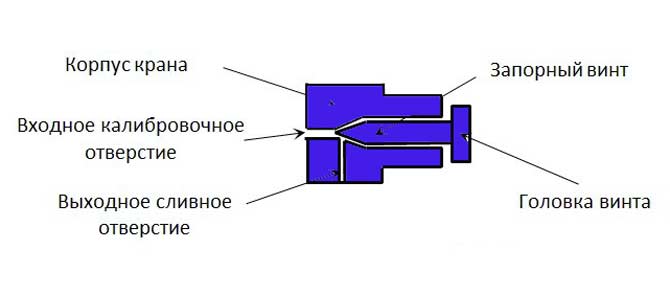

The Mayevsky crane was invented over 80 years ago. This very simple device is very effective and reliable. Therefore, it is still relevant.
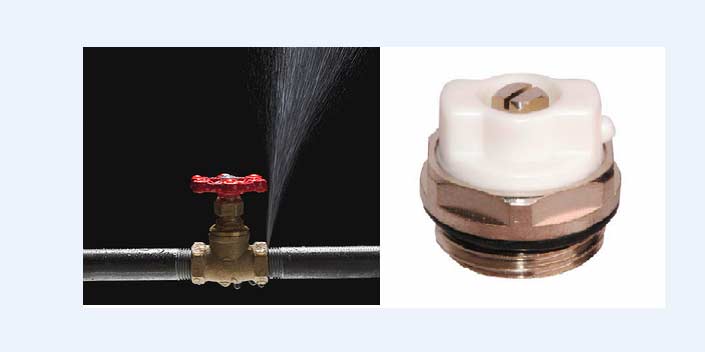

The tap is installed at the top of the heating radiators. It can be equipped with an automatic air vent or manually operated.
By opening the valve half a turn, air leaves the system and makes room for the coolant. This device is used for all types of batteries, even for old designs.
And where does the air come from in the heating system?
The appearance of air locks can be for several reasons:
- when installing heating systems;
- during repair work with the removal of fluid from the system;
- when installing a new radiator;
- in case of air leaks into the system during operation;
- as a result of a physical phenomenon (water emits air bubbles during any corrosion processes);
The latter often happens with aluminum batteries in urban buildings.
What is Mayevsky's crane
Attempts to solve the problem of the formation of air jams in heating systems were made at the beginning of the 20th century. For this, taps were actively used - they coped with the task of bleeding air, but they were often used not only for their intended purpose, but also for draining water from the heating circuit for other purposes.
Uncontrolled discharge of the coolant caused damage to the heating network, as it could cause the formation of additional air locks and a change in pressure in the pipes. In addition, the high temperature of the water flowing into the radiators could have affected the people using it.
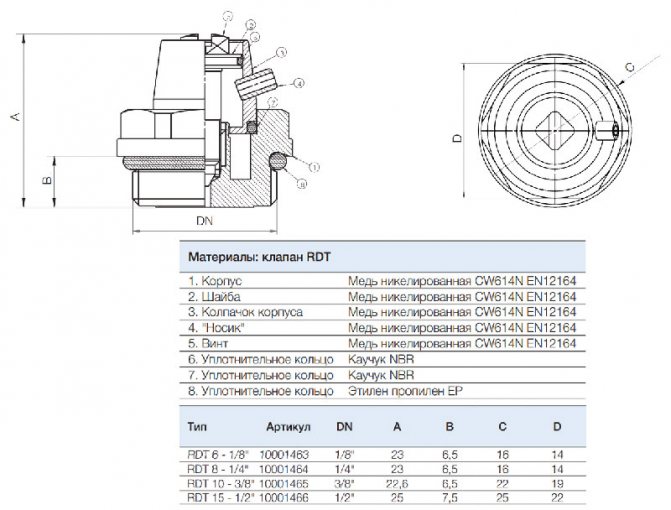

The inventor Ch.B. Mayevsky, after whose name the air vent is named, invented not the air vent itself, but a method of sealing its parts. Mayevsky proposed to connect the parts of the crane cone into a cone. This made it possible to maintain the tightness of the heating network unit in the closed position. In addition, this design made it inconvenient to collect water from the heater.
We recommend that you familiarize yourself with: How to bend a metal-plastic pipe manually or using devices
Device and principle of operation
The Mayevsky crane is made from materials that are resistant to corrosion, such as brass. Outside, the metal case can have a plastic shell to give a more aesthetic appearance.
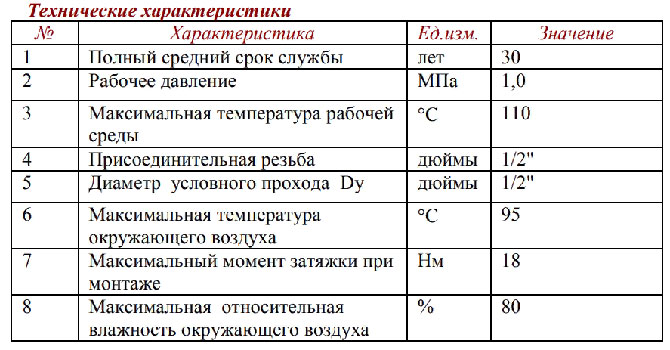

The main parts of the Mayevsky crane structure:
- housing with inlet calibration and outlet drain holes,
- cone needle valve,
- sealing ring,
- valve or locking cap screw or screwdriver.
The design of the air vent can be changed and supplemented with other elements, have different thread diameters, while the principle of operation remains the same.
In the closed position, the needle valve maintains the tightness of the system and does not let the coolant out. By turning the locking screw, the needle moves, freeing the drain hole.
Air flows from the battery into the valve's calibration port and is released to the outside through the drain port. After the air is released, the formed cavity is filled with hot water, the circulation of the coolant is restored, and the pressure inside the pipes is equalized.
The device and operation of the Mayevsky crane
The Mayevsky crane is made using a brass alloy that is resistant to corrosion formations. Presented as a body with an internal cone needle valve. Due to the tapered shape of the end part of the screw, a tight fit into the through hole occurs. The hole diameter can be from one and a half to two millimeters.
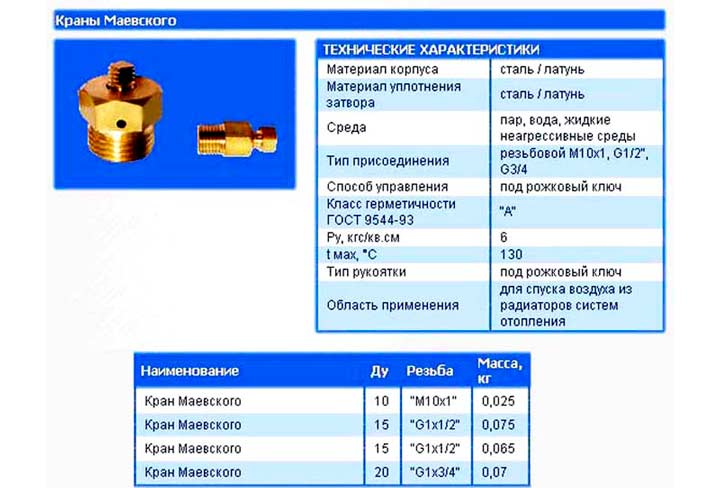

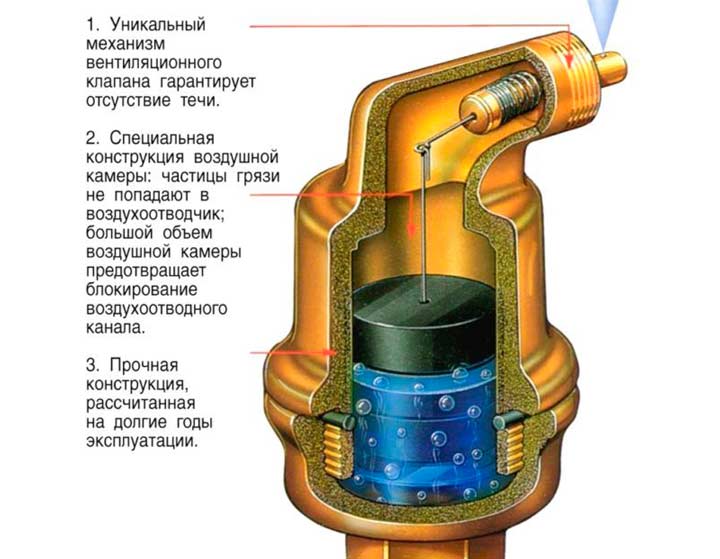

This valve is externally adjustable with a plug screw. The closed valve retains the internal heat carrier quite reliably. Outside, the screw is represented by a hex or square head for a special key and a thread for a screwdriver. Longitudinal grooves are made on the screw body for air passage during valve opening. In this case, the air leaving the grooves is in the chamber, which is tightly closed with a cuff and has an exit hole of the same diameter as the through hole. Since the valve is mounted with a threaded connection with a gland gasket, and a closed valve hermetically closes the through hole, then when the heating system is operating, this valve provides the system with tightness. By turning the screw, a plug opens, releasing air from the radiator cavity.
The metal body of the Mayevsky crane is trimmed from above with a plastic casing, which makes the crane modern.
Crane devices can be of various modifications, but the principle of operation is always the same.
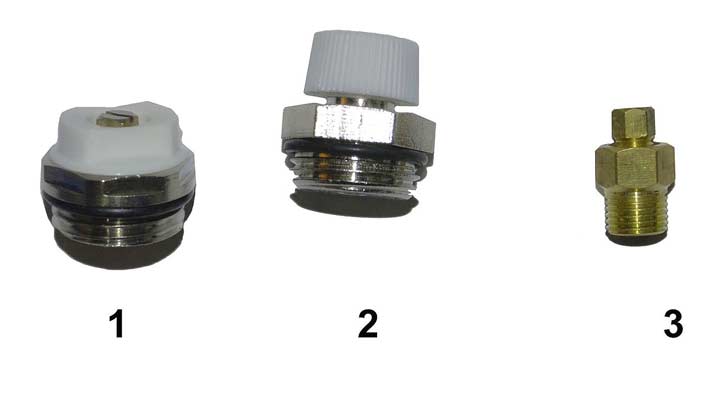

The diameter of the thread on the outside is different and therefore it is possible to select a suitable tap for any battery. The faucet can be with a thread size of 1 ", three quarters, one second". Also, the Mayevsky Crane Du 15, 20 and 25 mm is used not only in radiators, but also in various nodes of the heating system.
On a note: Du - nominal bore diameter.
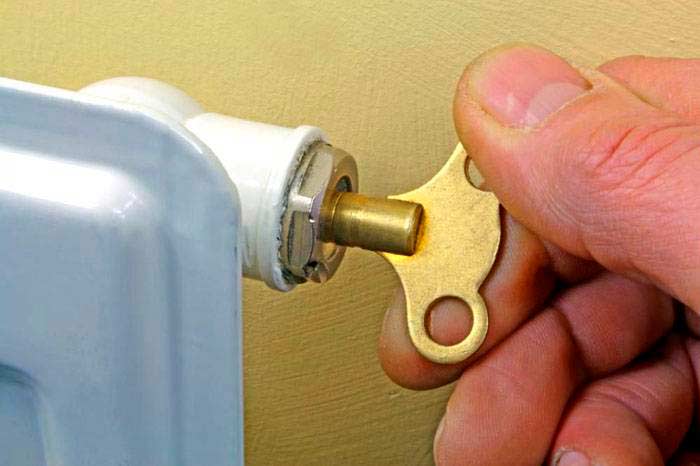

The adjusting screw is operated with a special tap wrench or a conventional screwdriver. The tap wrench is four-sided, very compact, and it is convenient for them to work even if the radiator is located in a place with difficult access.
The crane, in some cases, can be adjusted without a special tool.
The valve is turned by hand, which allows air to be vented.
Varieties
The air separation of the Mayevsky crane is of three types, which differ in the principle of operation and structure:
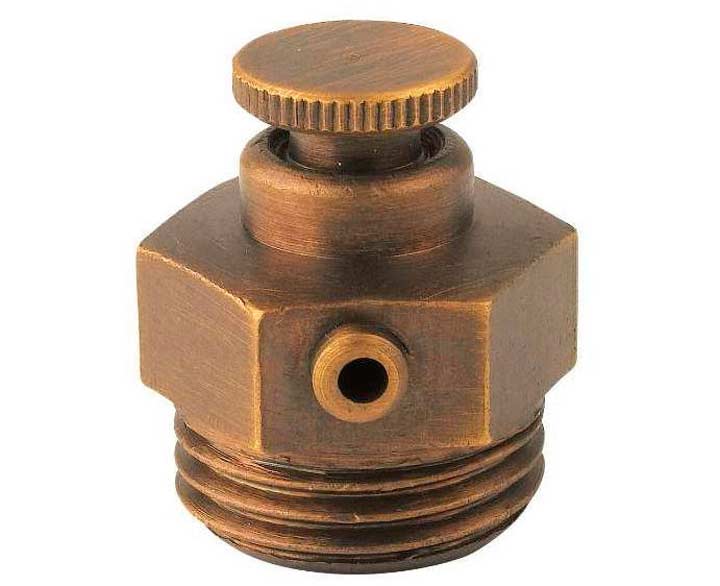

- Manual crane... It is a simple hand-operated device. If the battery does not evenly warm up, the tap is opened with a key or screwdriver, and after the air leaves the radiator, I wrap it back.
... There are differences in design and principle of operation from manual ones. Mayevsky's automatic valve is brass in the form of a cylinder, but a needle valve is not provided here. Instead, a plastic float is used. The principle of operation here is that the float moves in the presence of air through the system and opens or closes the valve. Human intervention is not required here.
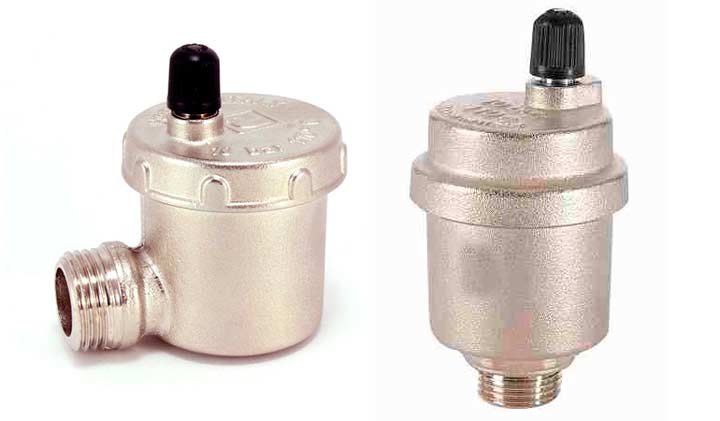
Automatic faucet
Such a crane works a little differently.
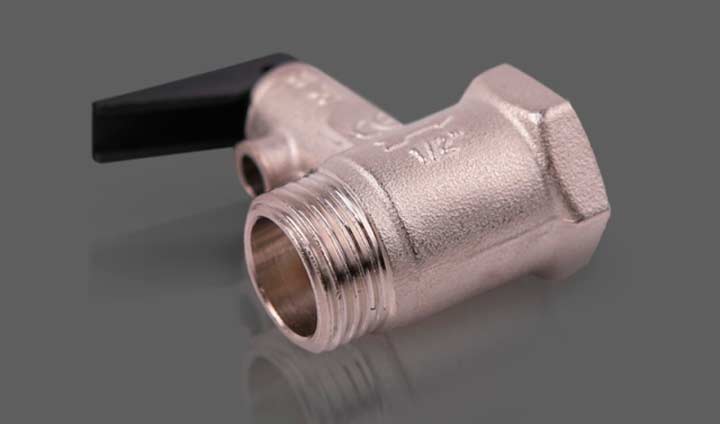
Safety valve.
The safety device monitors the pressure in the system. If the pressure rises above 15 atmospheres, the valve is triggered and begins to bleed the coolant from the heating system. This helps to prevent damage to elements in the system due to possible water hammer. The installation of a tap with an automatic valve is important for heating systems with polypropylene and metal-plastic pipes that are not able to withstand high pressure.
When choosing a specific crane model, it is necessary to take into account such nuances of the radiator as:

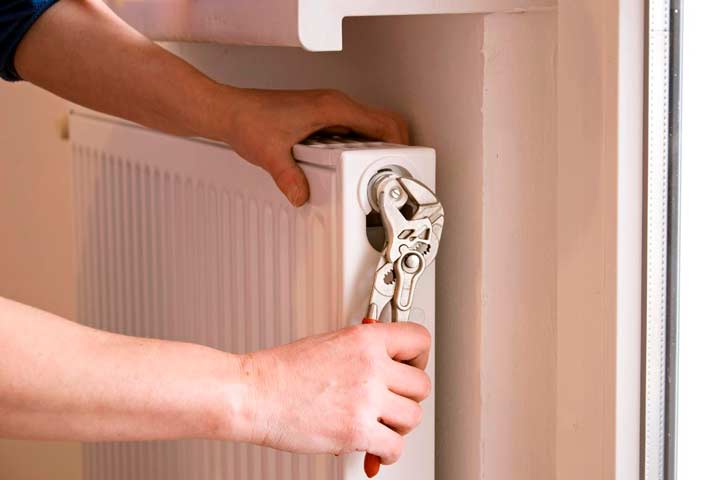
In a centralized heating system, it would be better to use a manual tap, which can be vented at any time.- It is also not advisable to install cranes with automatic control in apartment buildings with centralized heating. Since, there is increased pollution and the tap will be periodically clogged.

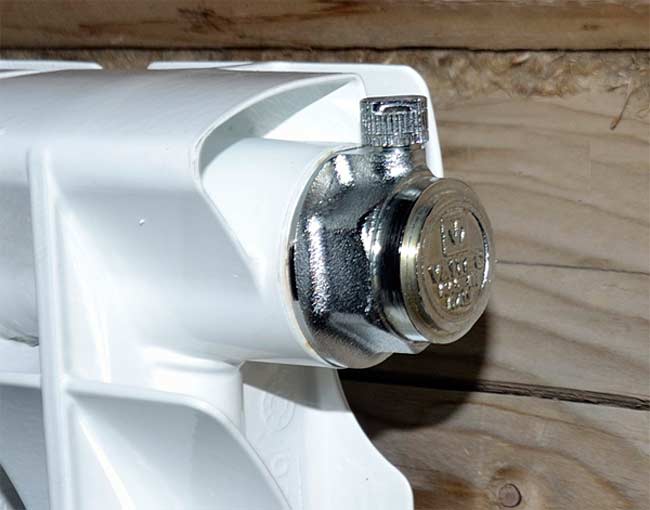
The automatic crane is used mainly in individual households with an autonomous system. In such a system, there is a maintenance of the cleanliness of the coolant.- Automation is also installed in places where access is difficult. This is, for example, if the radiator is located in a niche or recess, and it is relatively difficult to reach its end. A regular screwdriver will not help here.
In the case of a hard-to-reach location of the heating device, a special four-sided wrench can help. The old models of cast iron radiators are still used to the full. For cast-iron radiators, a Mayevsky manual crane is suitable. But the best option would be to use a special brass automatic air vent.
When choosing fromThe corrosion resistance of the material must also be taken into account. Many manufacturers use chrome-plated steel for their valves, which have a short lifespan. The best materials for parts are brass and stainless steel.
Mayevsky valve
Different Mayevsky valves
Note. A Mayevsky crane is a type of shut-off valve with a valve, with the help of which air is released from radiators.
- In 1931, by order of the State Planning Commission, it was decided to use air taps on radiators to bleed air from them, and in 1933 the Leningrad engineer Ch.B. Mayevsky presented a sealed valve developed by him, which was opened with a cross-shaped key... Now, as a rule, it is opened with a socket wrench or a screwdriver, but in all other respects this device remains unchanged to this day.
- This design is a needle-type check valve, where the stem is moved by a screw using a square head, which has a slottherefore it is also adjustable with a screwdriver. The hole where the Mayevsky tap is screwed in for cast-iron radiators 15 mm is similar to the DN 15 or ½ ”- it is located in the upper part of the battery on the left or right, parallel to the thermal head or the upper supply pipe.


Heating of the battery when looking through the thermal imager
- You have probably come across such a situation when the radiator has different temperatures in different places (at one end it is hot, and at the other end it is cold), or you have all the batteries cold, and at the same time, the neighbors who are powered from the same riser - hot... In one and the other case, the culprit of the situation is air locks, which most often accumulate not in the pipes of the circuit, but in the sections of the radiators, without letting water through, that is, preventing the coolant from circulating throughout the entire area of the device.
- Air usually collects at the bottom of the battery, where the circulation of the coolant is slowed down and in the old days the problem of its removal was solved with the help of an ordinary tap, which was installed in the entrance or in someone's apartment - the air was let off along with water, and a huge amount of the coolant was drained at the same time.
Moreover, this was done even when the valve was no longer a novelty - since all the resources were ownerless and very few people were interested in the energy consumption for the coolant, but now they learned to count, and this device turned out to be very useful.
Note. It should be noted that such a valve is not a panacea, and if you bleed the air, and the battery remains barely warm, then the reason here is its clogging and it needs to be flushed.
Varieties
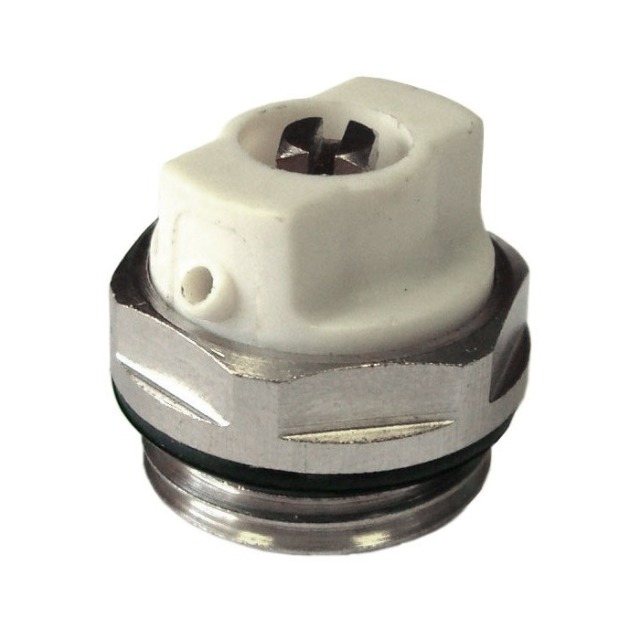

Manual type device
The most common valve in the world for water heating systems is a manual valve, controlled by a socket wrench or a screwdriver - you can see its image in the top photo. The name (definition) comes from the control method, but this does not diminish its merits at all - the mechanism is reliable enough and, if properly installed, never creates problems and does not cause complaints from anyone.
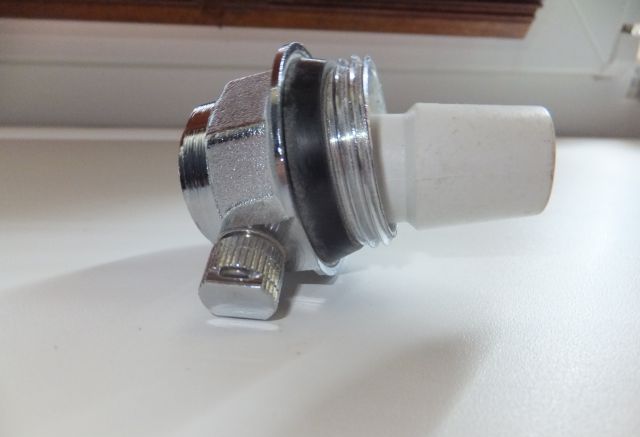

Automatic valve
In some cases, the installation of an automatic Mayevsky crane is required, for example, where maintenance of heating devices is difficult or impossible at all - staff may simply be absent.
But with such devices, you should be very careful, since they independently release air, with which water comes out, so for residential premises, public buildings, shops and offices, this is hardly acceptable - it is best to use the manual version of the mechanism, yes and its price is much less.
Device
Mechanism drawing
In appearance, the Mayevsky tap or valve is very similar to the most common plug. Only with a slightly modified head, since there is a turnkey control device and a screwdriver.
The entire air outlet is made of two main parts - the body itself, which is screwed into the threaded bore and the valve made in the form of a screw with a tapered end, which is clearly visible in the drawing above.
A calibrated hole is made in the inner part of the case from the back side - when the screw is tightened, the cone enters there and clogs the passage.
The principle of its operation is extremely clear from the mechanism of the mechanism - when the cone screw is unscrewed, the passage is freed, the coolant presses the air and that, passing through the sections, comes to the hole and descends, of course, a certain amount of water comes out, but even for an autonomous heating system it does not have absolutely no value.
The advantage of this device is that even a teenager can operate it - the screw is unscrewed very easily and after a few turns you can already hear a characteristic hiss - this is bleeding air.
In addition, the intake of hot water from the system through such a device is almost impossible, so the utilities serving you will be incredibly happy to see the valve on your batteries.
Recommendation. If you decide to deflate the radiators, be sure to use a shallow bowl or at least a plate, as in any case some water will spill onto the floor.
Air valve installation
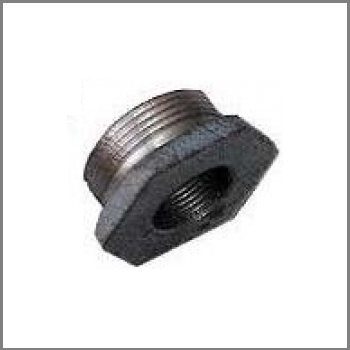

Cast iron case with hole for air valve
So, if you decide to independently install a Mayevsky crane for bimetallic radiators (cast iron or aluminum), then first of all, of course, you should go to the store and purchase it.
In addition, you will need fum tape (if you work with a cast-iron battery, you can use tow) and Unipack plumbing paste, which seals the threaded connection.
On bimetallic and aluminum radiators, there is already an inlet for the device, only a regular plug is screwed into it (in most cases, radiators are already equipped with a real tap), but for cast iron you will have to buy a foot with a threaded hole, as in the top photo.
Further, to install the device on the heater, the instruction requires you to shut off the shut-off valves (taps) on the supply and return pipes, and if there is none, then you will have to drain the water from the system or wait for the end of the heating season (at the end, the water is drained).
Then, after substituting a bowl or a deep plate in advance, unscrew the plug or foot, if it is cast iron, and clean the threaded hole from debris that always accumulates there, even if the radiators were installed not so long ago.


Use an adjustable wrench
If it is cast iron, then twist the shoe with a hole, having previously wound it with tow and greased it with Unipack paste, and you need to tighten it very strongly - usually a gas wrench # 2 is used for this. After that, wrap up Mayevsky's tap with fum-tape, grease it with paste and screw it into the hole. Open the valves of the stop valves and check the functionality of the valve.
How to install a Mayevsky crane
The valve is installed on the top of the battery on the opposite side of the coolant intake, because this is the place where air accumulates. It is also worth keeping in mind the subtleties of various systems.
On a note: With a vertical heating system, taps should be installed on the batteries of the upper floors. Also, they must be installed on all heating elements supplied to the riser below the connection axis. And with a horizontal system, the taps are mounted on all radiators, without exception.
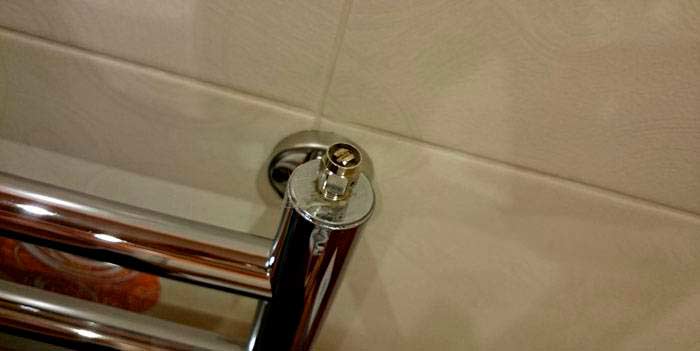

In the case of installing a Mayevsky crane on a battery standing on the floor, it must be placed at the highest point of the radiator. The adjusting screw points up.
As a rule, the bathroom has a heated towel rail, which is heated by the circulating heat carrier inside. Here they install Mayevsky's tap for a heated towel rail.
The absence of this valve in such a system can lead to air locks that stop the circulation of both the heating circuit and the hot water circuit. Therefore, the presence of this tap on heated towel rails will eliminate this problem.
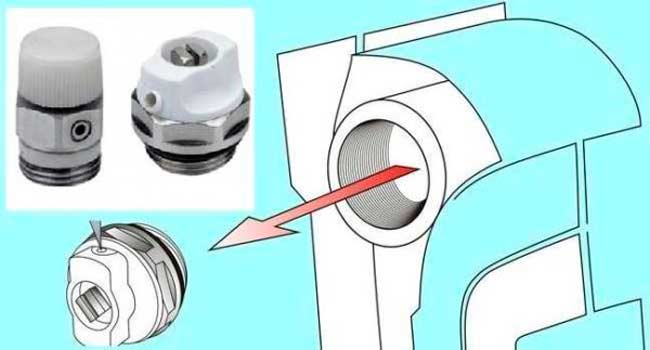

When installing a Mayevsky crane for a heated towel rail, it must be placed strictly vertically using a special tee. The tee will move the working vertical axis to a horizontal position. This provision fulfills the requirements prescribed by the instruction. Namely, the air bleed hole should be directed in the opposite direction from the wall and be sloped downward.
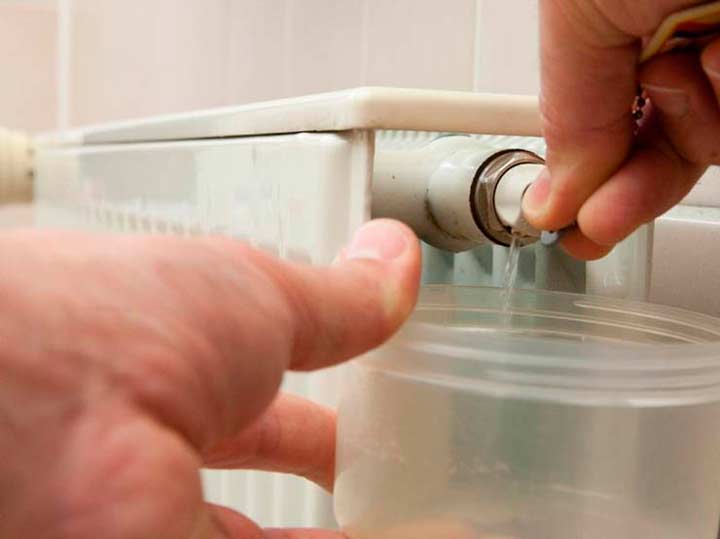

Immediately after the completion of the installation work of the heating system it is necessary to carry out airing... Because in the process of work, air in any case enters the radiators. Also, this event must be carried out including the system after the summer period. After all, air can also accumulate due to the release of hydrogen during the corrosive processes of a metal element. In radiators made of aluminum without a special coating, the release of this element is constantly observed inside and a chemical reaction with the coolant occurs.
What to look for when choosing a crane
The choice of an air vent depends on the heating system in which it will be installed, the material of pipes and batteries, free access to the installation site and other nuances of installation and further operation.
- In houses with centralized heating, it is better to use a Mayevsky manual crane or a fused crane, since water shocks occur in such heating networks. Automatic is best used in a private house with an individual heating system. In an apartment building with central heating, the automatic tap will clog up due to contamination of the coolant.
- If cast iron batteries are installed in the room, it is better to equip them with a manual tap. A faucet with a built-in fuse is suitable for a heating circuit made of metal-plastic or polypropylene pipes, since they may not withstand a water hammer.
- In hard-to-reach places: niches, recesses, an automatic tap or a manual one, equipped with a built-in valve, is installed.
- In rooms where children can be, on the contrary, it is not worth installing a tap with an easily opening valve.
- The diameter of the external thread of the valve must be selected in accordance with the diameter of the hole in which it will be installed. There are only three types for this parameter: 1, 0.5 and 0.25 inches, the same sizes of tap holes are provided in standard radiators.
- When buying a Mayevsky valve, it is important to pay attention to the material from which it is made. The construction with a brass body will last the longest, as this material is resistant to corrosion.
- Tap seal
We recommend that you familiarize yourself with: Tie-in and methods of connecting elements in the duct
Features of operation
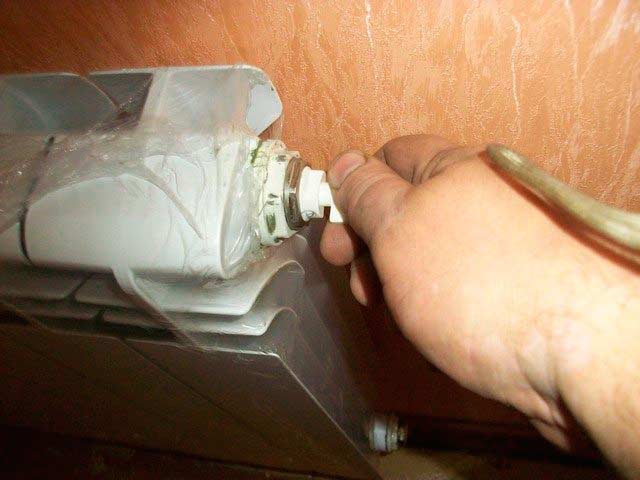

Let's see how to use the Mayevsky crane in work. First, put a container under the radiator and prepare a dry rag. Use a special wrench or a simple screwdriver to turn the locking screw. In this case, you need to turn counterclockwise and half a turn. Air will start to come out and then water will come out. It is necessary to wait for the moment when the liquid will flow without interruption. Then tighten the screw.
A case where the air has been removed and the radiator remains cold indicates a clogged system.
In order to clean a clogged battery, you need to seek help from a plumber.
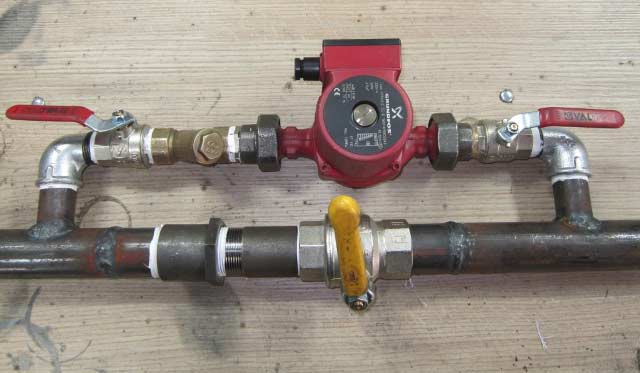

Note: If the heating system has a pump operating on the principle of forced circulation, then it will need to be turned off 10 minutes before the air lock is released. With the pump on, the water flow will carry air through the system and will not accumulate at the top of the battery.
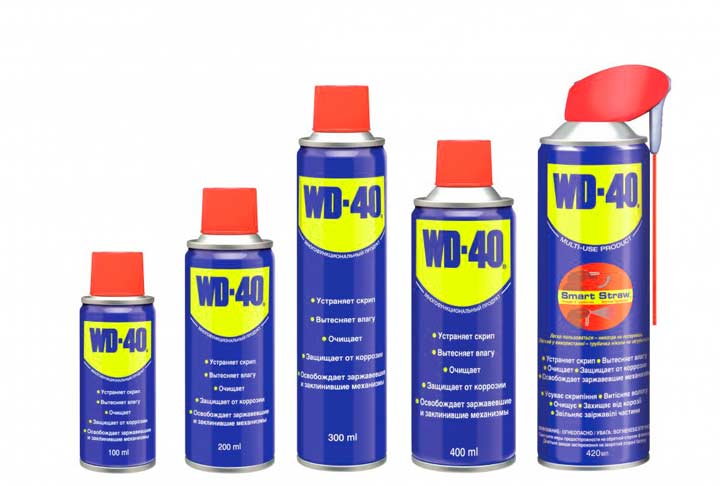

If there is a blockage in the opening of the Mayevsky tap, you can try to clean it yourself with a sharp object. Also, if the valve is not used for a long time, the adjusting screw will be difficult to rotate due to possible corrosion formations.If such a problem occurs, use a tool such as WD-40 spray lubricant. It works very quickly and helps to unscrew the screw easily.
Also, at the end of the heating season, grease the screw. In this case, there will be no destruction of the thread under the influence of the coolant.
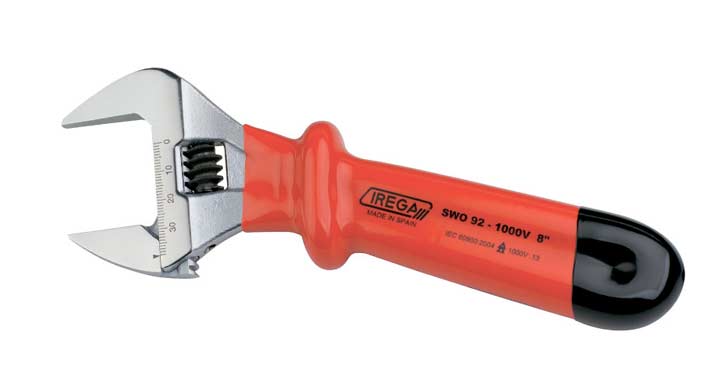

If it becomes necessary to replace the Mayevsky crane, you need to use two adjustable wrenches. One key holds the radiator cap, and the other unscrews the tap. If this is not observed, then when unscrewing the valve, the plug may loosen, which will lead to leakage.
If you monitor this device, do routine diagnostics and cleaning, it will last a long time without any problems.
How is an automatic valve different from a conventional one?
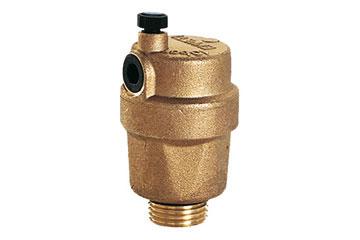

Automatic air release
The main advantage of the automatic device is that it does not need any maintenance. The automatic valve body is like a short cylinder. It is also made of durable metal in brass or chrome finish. But inside it is not a needle shutter, but a plastic float.
It is he who, depending on the location of the air, moves inside the body and opens or closes the shutter. The latter fits snugly against the hole in the upper part of the body due to the presence of a stem with a spring.
Note! All automatic models have shapes for a screwdriver or a special octagonal wrench, which help to open the device in a forced manual mode. This design feature allows you to bleed air if the machine stops working for some reason.
If a coolant of dubious quality circulates in the system, Mayevsky's taps become clogged very quickly, so they often have to be cleaned or repaired. In order to simplify these processes, experts recommend completing the device with a shut-off valve. It is screwed onto the battery before installing the Mayevsky crane.
Mayevsky crane price
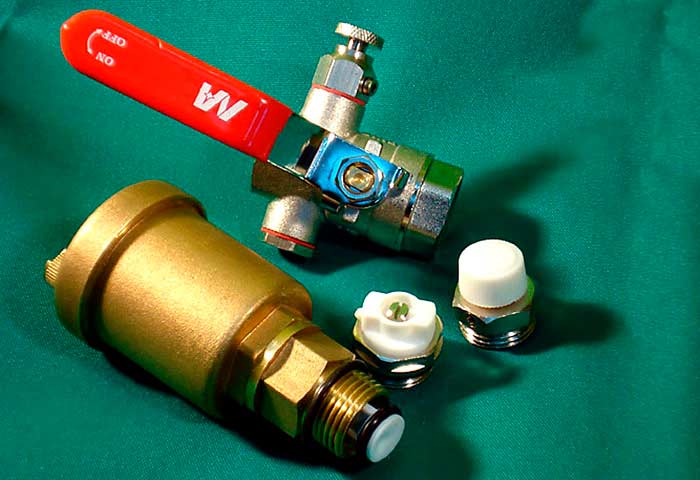

Now the plumbing market presents many types of Mayevsky faucets. There are domestic and foreign manufacturers, and various materials and components are used.
There are both metal and plastic taps for every taste.
The price will depend on indicators such as:
- a type;
- material;
- diameter.
The cost of the crane starts at thirty rubles.
Application of the Mayevsky crane for cast iron radiators
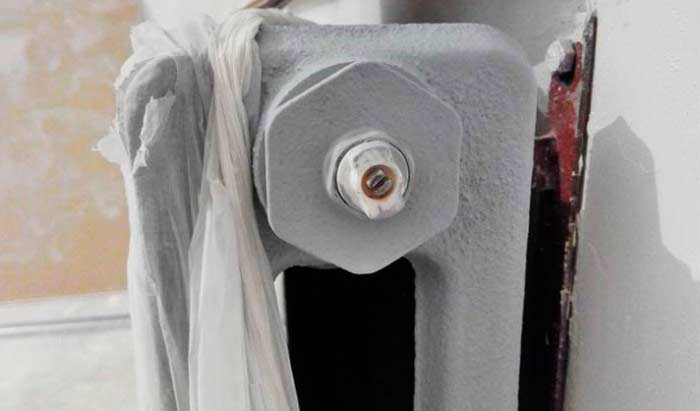

In a cast-iron radiator, there is no bore for a standard valve in the plug-plug. There are craftsmen who are trying to install a valve to remove the airlock by drilling and tapping on a cast iron plug. But this structure can be disrupted by such a phenomenon as water hammer when pressure rises. The way out of this situation is to install an automatic air vent that matches the size of the cast-iron radiator plug. And also they are not afraid of blockage.
If there are solid particles of various debris in the coolant, then a mechanical standard filter must be installed directly in front of the tap to drain water.
Design features
The design of the crane is quite simple. It consists of a body with a calibrated thin hole and a cone-head locking screw screwed into it. The housing has an opening for air outlet.
The outer end of the locking screw can be made in the form:
- slotted head for a screwdriver;
- a four-sided head for a special key;
- wing-type handles for loosening the screw by hand.
Some designs have a separate air collection chamber inside the enclosure with an air outlet.
Outside the body, there is a standard thread for installing the valve in the radiator hole instead of the plug (plug).
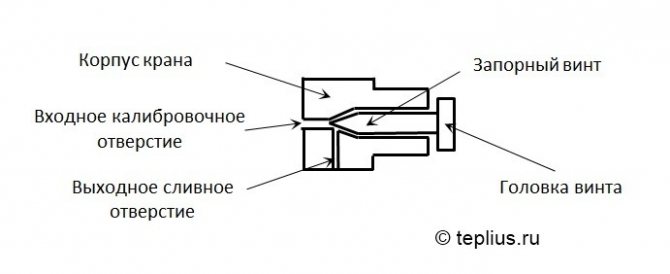

Mayevsky crane device
To release the air, the plug screw is unscrewed by half a turn (a full turn is possible). This opens the calibration hole, through which air from the radiator first enters the hole in the valve body, and then goes outside.
After complete air removal, the plug screw must be tightened up to the stop.
Mayevsky crane in pneumatic systems
The technical feature of the Mayevsky crane is the uniqueness of the design.
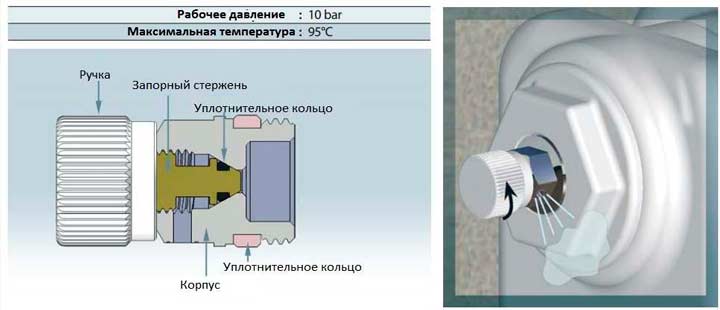

It can be used not only to remove air, but also liquid. Namely, fluid from a pneumatic system in which air pressure is increased. The entry of compressed air from the compressor into the system is accompanied by a large amount of water vapor. Special freezing devices and various filters take away excess moisture. During long-term operation, a large amount of liquid can accumulate in the pipes. It accumulates in the lower area of the pneumatic lines, and is also sprayed throughout the system. Water must not come into contact with the working pneumatic device. This is where Mayevsky's crane turns out to be the salvation. Only in this situation is it mounted in the lower part of the circuit. The bleeding process begins with getting rid of the water and ends with the release of air. Then the tap is closed and the system is again sealed.
